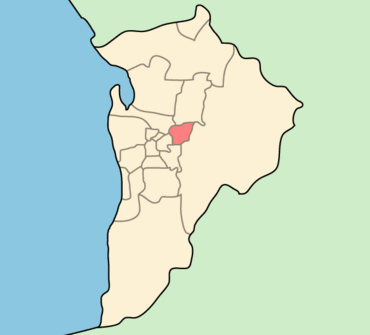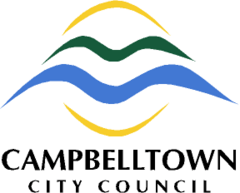City of Campbelltown (South Australia) facts for kids
Quick facts for kids City of CampbelltownSouth Australia |
|||||||||||||||
|---|---|---|---|---|---|---|---|---|---|---|---|---|---|---|---|
 |
|||||||||||||||
| • Density | 2,250,51/km2 (582,880/sq mi) | ||||||||||||||
| Area | 24.35 km2 (9.4 sq mi) | ||||||||||||||
| Mayor | Jill Whittaker OAM | ||||||||||||||
| Council seat | Rostrevor | ||||||||||||||
| Region | Eastern Adelaide | ||||||||||||||
| State electorate(s) | Morialta, Hartley | ||||||||||||||
| Federal Division(s) | Mayo, Sturt | ||||||||||||||
 |
|||||||||||||||
| Website | City of Campbelltown | ||||||||||||||
|
|||||||||||||||
The City of Campbelltown is a local government area in Adelaide, South Australia. It's located in the north-eastern suburbs, about 6 kilometres from the city centre. This area is bordered by the River Torrens and other local councils. These include the City of Tea Tree Gully, Adelaide Hills Council, City of Burnside, City of Norwood Payneham St Peters, and City of Port Adelaide Enfield.
Contents
A Look Back: Campbelltown's History
The story of Campbelltown began in 1854. Back then, it was part of the District Council of Payneham. This council was formed when the older District Council of East Torrens was split into three parts. This was done to make local government work better.
In 1867, a new council called the District Council of Stepney was created from Payneham. This was to better serve the more city-like areas. Soon after, on February 27, 1868, the Payneham council changed its name. It became the District Council of Campbelltown. The name "Campbelltown" was chosen to honor Charles James Fox Campbell. Later, the Stepney council also changed its name to the District Council of Payneham.
On January 1, 1946, the Campbelltown District Council grew. It became a town with its own municipal office. Then, on May 6, 1960, it was officially declared a city.
Lochend House: A Historic Home
In 1842, Charles Campbell bought some land near the River Torrens. He built a house there and named it "Lochend". He named it after his family's old home in Scotland. George Strickland Kingston designed Lochend. It was built using local river stone.
Campbell later made Lochend much bigger. He added more rooms and a cellar. The property included a 4-acre garden and 156 acres of land for farming. In 1849, he divided 16 acres of his land into 40 smaller blocks. He called this new area "Campbelltown".
In 1852, Campbell leased the house to James Scott. By then, the house had six rooms. Campbell sold Lochend to Scott in 1858. The Scott family made the house even larger, to eleven rooms. They also added a stable, coach house, and a small cottage. The property had vegetable and fruit gardens and 58 acres for crops.
Later, the Hobbs family owned Lochend and another house nearby, Lochiel Park. In 1947, the Hobbs family sold both houses to the South Australian Government. For a while, Lochiel Park was used as a place for young boys.
In the early 1980s, the Campbelltown Council took ownership of Lochend. The house was in very bad condition. It was empty, partly broken, and dangerous. In 1998, the Council started working to save it. With help from the Campbelltown Historical Society, it was carefully restored. Lochend was officially reopened on February 29, 2004.
Today, Lochend House is inside Lochiel Park. It is a listed building, meaning it's important for state heritage. It's also on the Register of the National Estate. The City of Campbelltown owns it. You can visit Lochend House for two hours on the first Sunday of every other month.
Lochiel Park: A Green Village
Lochiel Park is a special urban development covering 15 hectares. In 2002, the South Australian Government announced plans for an ecovillage here. This site used to be a reformatory and a college.
The original idea was to build regular houses. But a new plan was proposed. It suggested building medium-sized homes on only one-third of the land. The rest of the area would become public parkland. This parkland would include an urban forest and wetlands to help manage rainwater.
The development started in 2004. By 2018, there were 106 homes in Lochiel Park. By 2022, about 150 people lived there. All houses have a high energy rating (at least 7.5-star). They are built with very strict rules for saving energy and water efficiency. It's known as a "nation-leading 'green village'".
The Lochiel Park Community Garden was started in June 2010. Residents had met in 2008 to plan it. The first vegetables were picked in December 2010.
In 2013, South Australia's first zero carbon home was built in Lochiel Park. This means it produces as much energy as it uses. It was built for the same cost as a normal home. This house was finished in 16 weeks and cost about $335,000.
After the development was finished, the council and SA Water took over caring for the urban forest, wetlands, and reserves. In 2019, Lochiel Park won an international Green Flag Award. It was the first in South Australia to receive this award.
Your Local Council
The Campbelltown Council has 11 elected members. This includes a Mayor and 10 Ward Councillors. The council area is divided into five wards. Two councillors are elected from each ward.
The current council, as of December 2022, is:
| Ward | Party Affiliation | Councillor | First Elected | Notes | |
|---|---|---|---|---|---|
| Mayor | Independent | Jill Whittaker OAM | |||
| Gorge | Independent | Dom Barbaro | |||
| Independent | Johanna McLuskey | ||||
| Hectorville | Independent | Luci Blackborough | |||
| Labor | Yassir Ajrish | ||||
| Newton | Independent | Claude Scalzi | |||
| Independent | Anna Leombruno | ||||
| River | Independent | Jagdish Harish Lakhani | |||
| Independent | Matthew Noble | ||||
| Woodforde | Liberal | Therese Britton-La Salle | |||
| Independent | John Flynn | Deputy Mayor | |||
Sister and Friendship Cities
The City of Campbelltown has special connections with two other cities around the world. These are called Sister Cities or Friendship Cities. They help promote cultural exchange and understanding.
 Paduli, Italy
Paduli, Italy Oyster Bay, United States of America
Oyster Bay, United States of America
Suburbs in Campbelltown
Here are some of the suburbs that are part of the City of Campbelltown:
- Athelstone (5076)
- Campbelltown (5074)
- Hectorville (5073)
- Magill (5072)
- Newton (5074)
- Paradise (5075)
- Rostrevor (5073)
- Tranmere (5073)

